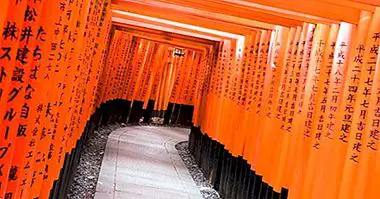What does the blue color mean in Psychology?
If we observe the Earth from space, it is very easy to guess why it is also called the blue planet.
It is obviously the high presence of seas and oceans in our, occupying these three quarters of the world. But if we see it blue it is not by water itself, but by how our eyes perceive the refraction and absorption of light.
Color has had great symbolic implications since antiquity, and today it is even known scientifically that the perception of a particular color can have effects at the psychic level both in ourselves and in other beings. What does the blue color mean in Psychology? We are going to discover it throughout this article.
- Related article: "Psychology of color: meaning and curiosities of colors"
What is this color?
The blue color is one of the primary colors that the human being is capable of perceiving, and one of those that one of the three types of cones that we have in our eye is capable of detecting directly. It is important to keep in mind that color is not an entity or property per se of light, but rather an effect of the perception of its refraction on objects . Thus, things are not blue but we perceive them blue.
Specifically, we could consider that the color blue is the perception through the vision of the Reflection of light with a wavelength between 460 and 482 nm , actually including a wide range of tones depending on how much is mixed with the other basic colors.
What does the blue color mean in Psychology?
The blue color has and has always had a great effect on the human psyche, largely because of the symbolism and the association of color with elements that we perceive of that color and that generate concrete emotional experiences. Specifically, the color blue is usually linked to water in almost all its forms, especially seas and oceans, as well as rain. It also highlights its association with the color of the sky.
These associations are, in fact, the ones that usually give their meaning in both the positive and the negative. Usually it has a more innocent and pure symbolism the light blue (sky blue, like morning or calm water) while dark blue is more related to maturity and hardness (more typical of storms, waves and dusk).
These effects and their possible practical application are studied in what is known as color psychology. Within this, it has been observed that blue is usually linked to introspection, shyness and tolerance, but probably its best known link is with the idea of serenity and calm . It is one of the colors most related to tranquility and control of the situation, as well as peace, understanding and protection. It is also linked to the care of others and to trust and credibility. Lighter shades are often associated with innocence and generosity, while the darkest are related to intelligence, power and knowing how to be.
Likewise, blue is usually linked to mental and emotional stability, as well as to reason (also to intelligence) and to a way of facing rational reality. It has been observed that the contemplation of blue favors the control and deepening of the breath, as well as that it helps in meditation processes. It also seems to favor creativity and cordiality, as well as understanding between people.
- Maybe you're interested: "Differences between Psychology and Anthropology"
Other meanings
Other concepts that a large part of the world symbolizes with this color are freedom, loyalty, harmony, fidelity, seriousness and truth . The color blue is also associated with strength and authority, physical energy, intelligence and sports. Likewise, it has traditionally been associated with masculinity, modernity and technological development.
On the other hand and like other colors, blue can also have negative connotations or make it more difficult day to day. For example, as mentioned, it is associated with the capacity for introspection and control. But this also links it to carry these to excess: especially dark colorations are associated with hyper-controlled behavior and lack of spontaneity. It is also associated with self-centeredness and distancing, as well as concealment and not revealing one's own identity or one's own weaknesses.
It is not uncommon for the blue color to identify rigid and conservative people, melancholic and emotional . In the field of mood, it is common for there to be a link between blue and sadness or depression, as well as passivity.
Practical utilities
The knowledge of these effects in the human psyche can be very useful, since it can be used to favor specific emotional states and contribute to improving mood and mental health.
For example, together with the white It is usually used in hospitals (especially in areas dedicated to children), schools and meditation centers, yoga and in the practice of relaxation activities. It is common to also appear in the common areas and rest of offices and offices of different types of professionals. In sports it is quite usual. It is also used in bedrooms, where it is linked to a greater perception of tranquility and facilitates sleep. Also in the kitchen, where it makes it easier to eat less.
In a less innocent and more interested way, it is also often used in the world of advertising and marketing for these same reasons. Many brands use it because of its link to credibility, truth and power , as well as for its association with leadership. In the same way and due to the above, it is also common to use it in different tonalities in different political events and electoral campaigns.
The blue in other cultures
So far we have discussed the role and value of blue color from the point of view of Western psychology. However, we must bear in mind that blue can acquire different nuances depending on the culture in which we are.
This color receives an important consideration in a large part of religions . Examples of this are Egypt or India, where it is considered sacred to the point that in the Hindu religion the god Krishna (one of the main and most important deities of his pantheon, symbol of love and care although also of severity) has the skin of that color. Judaism usually link it to holiness, as well as Christianity (for example, the Virgin's robes are often depicted as blue).
In Muslim countries, blue is considered a color linked to protection by being the color of the sky , as well as economic power. Indigenous peoples of South America tend to link it with the spiritual and sacred, being part of the clothing of some of their most important gods.
In China it is linked to healing and harmony, being able to symbolize wood and being considered a color of good fortune. However, sometimes blue is frowned upon and is associated with pornography and even evil. In fact, formerly people with blue eyes were badly seen in that country, being considered unnatural. In Korea its meaning is related to death, being in fact the color of mourning. In Eastern Europe it is usually linked to immortality. In Belgium, unlike most of the world in which it is linked to the masculine, it is associated with girls.



















